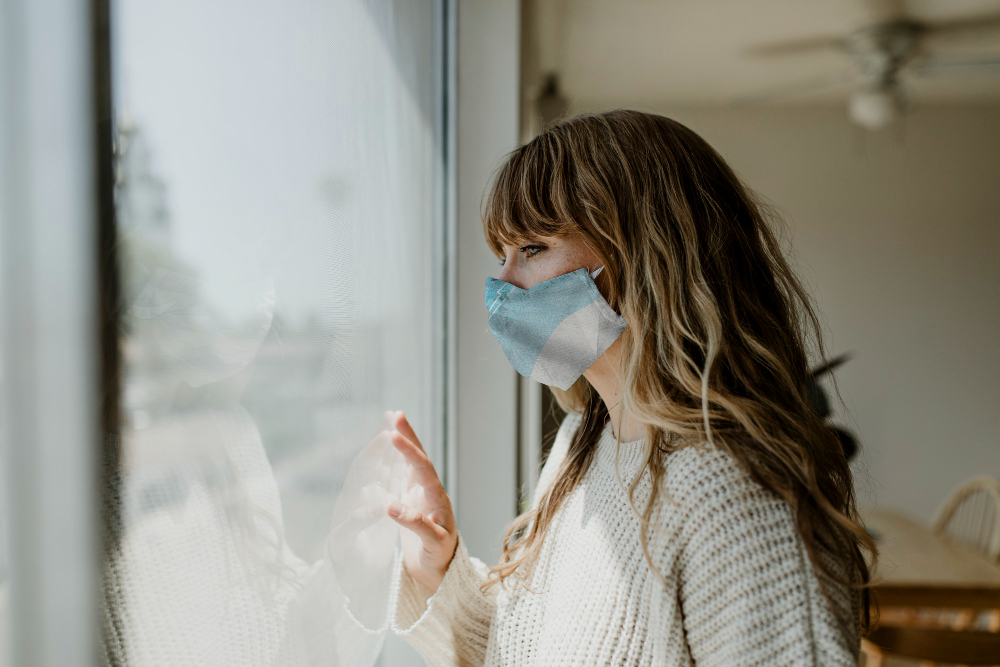“In the wake of upheaval, post-pandemic anxiety emerges as a testament to our shared vulnerability and strength. It reminds us that healing is not a solitary journey but a symphony of resilience and support. As we navigate the echoes of uncertainty, remember that within the complexities of our emotions lies the power to rebuild, reconnect, and rise anew.”
The global pandemic of the past years has reshaped the way we live, work, and interact, leaving behind a trail of profound changes and uncertainties. While vaccines and declining case numbers have brought a glimmer of hope, the lingering effects of the pandemic on mental health continue to cast a shadow. Post-pandemic anxiety, a complex emotional response stemming from the upheavals we’ve collectively experienced, has become a prevalent concern. In this blog, we delve into the intricate web of post-pandemic anxiety, exploring its origins and manifestations, and offering practical strategies to navigate these emotions and rebuild a sense of normalcy.
The Echoes of Uncertainty
The pandemic upended our routines, strained our social connections, and introduced a level of uncertainty that many of us had never encountered before. The abrupt shifts from lockdowns to remote work, coupled with health concerns and disruptions to everyday life, have acted as triggers for anxiety. The once-familiar landscape transformed into a realm of unpredictability, leading to a heightened state of alertness and vigilance.
Unpacking Post-Pandemic Anxiety
Post-pandemic anxiety is characterized by a range of emotions, including fear, worry, unease, and hypervigilance. It’s important to recognize that these feelings are natural responses to the upheavals we’ve faced. They stem from concerns about our health, the health of our loved ones, financial stability, and the broader societal impact of the pandemic. Understanding the roots of post-pandemic anxiety empowers us to address it with empathy and resilience.
The Manifestations of Post-Pandemic Anxiety
- Health Anxiety: Fear of contracting the virus or becoming seriously ill can lead to obsessive hygiene practices and excessive monitoring of symptoms.
- Social Anxiety: Prolonged periods of isolation have contributed to social discomfort and unease, making it challenging to reengage with the outside world.
- Ambiguity Intolerance: The uncertain nature of the post-pandemic landscape can trigger distress in those who struggle to tolerate ambiguity and unpredictability.
- Reentry Anxiety: The prospect of resuming pre-pandemic activities can evoke anxiety, as the once-familiar now feels unfamiliar.
- Generalized Anxiety: A pervasive sense of worry about various aspects of life, often accompanied by physical symptoms like restlessness and muscle tension.
Strategies for Managing Post-Pandemic Anxiety
1. Acknowledge Your Emotions: Recognize that your feelings are valid and a natural response to the challenges faced. Embrace self-compassion and avoid self-judgment.
2. Practice Mindfulness: Engage in mindfulness exercises to stay present and grounded. Mindful breathing and meditation can help ease anxiety and promote relaxation.
3. Gradual Exposure: If certain activities or situations trigger anxiety, practice gradual exposure. Start with small steps and gradually work your way up.
4. Stay Connected: Foster social connections by reaching out to friends and loved ones. Sharing your feelings can provide a sense of relief and camaraderie.
5. Limit Information Consumption: While staying informed is important, constant exposure to pandemic-related news can heighten anxiety. Set boundaries on news consumption.
6. Establish Routine: Create a daily routine that includes activities you enjoy, exercise, healthy eating, and adequate sleep.
7. Seek Professional Support: If post-pandemic anxiety significantly interferes with your daily life, consider seeking support from a mental health professional.
8. Practice Self-Care: Engage in activities that bring you joy and relaxation, whether it’s reading, painting, or spending time in nature.
9. Set Realistic Goals: Break down larger tasks into smaller, achievable steps to reduce feelings of overwhelm.
10. Focus on What You Can Control: Channel your energy into things you can control rather than fixating on factors beyond your influence.
Embracing the New Normal
The pandemic has brought about lasting changes, and the concept of “normal” has evolved. Navigating post-pandemic anxiety involves adapting to this new normal while maintaining a compassionate outlook. As we move forward, let’s remember that resilience is born from adversity. While the challenges persist, so too does our capacity to grow, learn, and heal.
The path to healing from post-pandemic anxiety is a journey that requires patience, self-awareness, and a willingness to seek support when needed. By acknowledging our feelings, adopting effective strategies, and nurturing our well-being, we can gradually regain a sense of equilibrium. As we embrace the lessons of resilience, empathy, and interconnectedness that the pandemic has taught us, we forge a path toward healing and rebuilding, both individually and as a global community.

